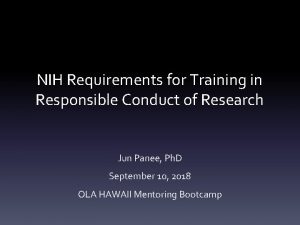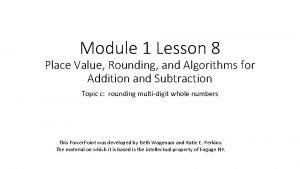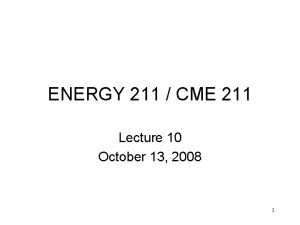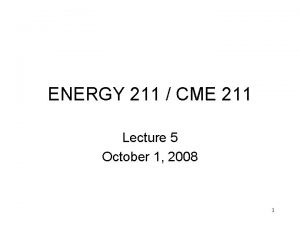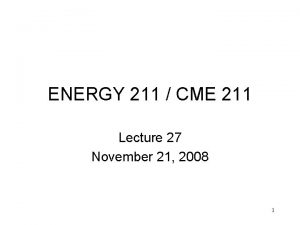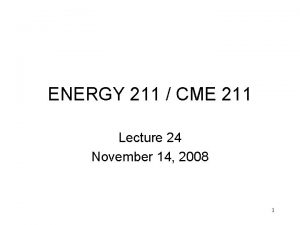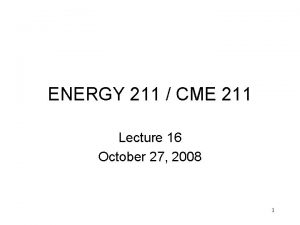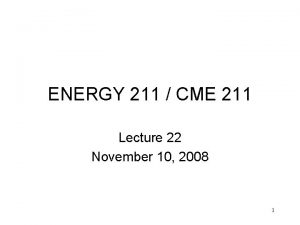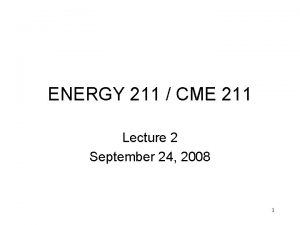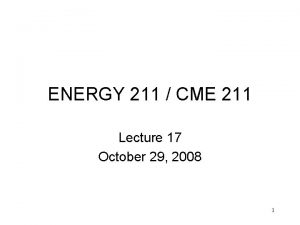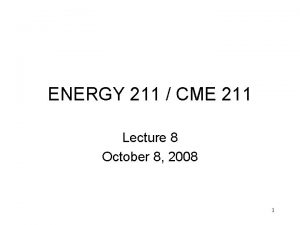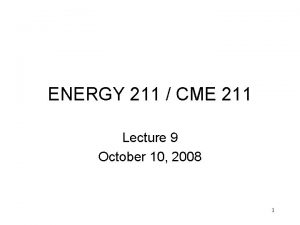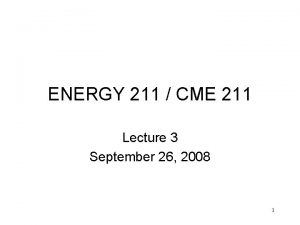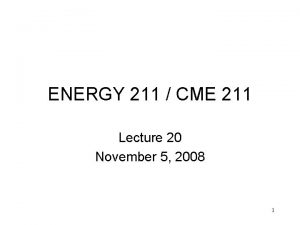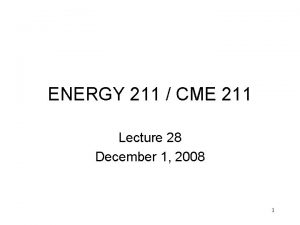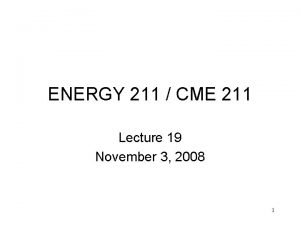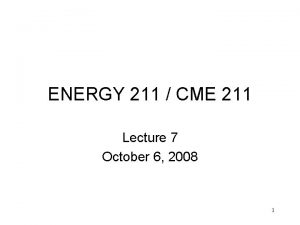Lecture 9 Dan Piett STAT 211 019 West




















- Slides: 20

Lecture 9 Dan Piett STAT 211 -019 West Virginia University

Last Week Sampling Distribution of the Sample Mean Central Limit Theorem Large Sample Confidence Intervals for the population mean Small Sample Confidence Intervals for the population mean

Overview 9. 1: Confidence Intervals for a population proportion 9. 2: Confidence Intervals for a difference in population proportions 9. 3: Confidence Intervals for a difference in population means

Section 9. 1 Confidence Intervals on a Population Proportion

Population Proportion In the previous class we were interested in predicting the population mean (µ). We did this with a confidence interval. Now we are interested in predicting p, the population proportion The proportion of Americans that are unemployed The proportion of Republicans in a voting district How do we do this?

Confidence Intervals on p All confidence intervals follow the same structure Point Estimate ± Critical Value * Standard Error The point estimate for the population proportion is the sample proportion ( ) x is our number of “successes” in our sample Number of unemployed Americans, Number of Republicans n is our sample size

Confidence Intervals on p Cont. Point Estimate ± Critical Value * Standard Error The Critical Value for our confidence interval will z This is the same z values from last class (1. 645, 1. 96, 2. 578) This comes at a cost though The Standard Error for our confidence interval is defined as

Putting the Pieces Together So, the formula for our confidence interval on p is… Example: Suppose we are interested in the proportion of WVU students who are violent with 95% confidence. We collect a sample of 144 WVU students and discover that 12 of them are violent. Find Answer We are 95% confident that the true proportion of WVU students who are violent is between

Section 9. 2 Confidence Intervals for a difference in population proportion

Difference in Population Proportions Suppose we are no longer interested in the true proportion of “successes” in a population, but are instead in the difference in the proportions of two populations. The proportion of Unemployed Male Americans vs. Unemployed Female Americans. The proportion of Republicans in Washington County vs. Republicans in Greene County. We will refer to our sample proportions Where n is the sample size in the sample from our first population and m is the sample size in the sample from our second

Confidence Intervals on a Difference in Population Proportions Point Estimate Critical Value Same z as before (1. 645, 1. 96, 2. 578) Much like with the CI for a population proportion: Standard Error

Putting the pieces together So the formula for the difference in population proportions is Example: Suppose we are interested in the difference in the proportional of adults who get the flu with and without a vaccination. Suppose 50 adults were vaccinated and 18 got the flu. Suppose another 100 adults were not vaccinated and 48 got the flu. 90% Confidence Find the Confidence Interval or the difference in the proportion of adults who get the flu (-. 25865, . 13865) Note that 0 is in the confidence interval

Conclusions from Differences in Proportions With 90% confidence, we estimate that the proportion of vaccinated adults who get the flu is between 25. 9% less and 1. 9% more than the proportion of unvaccinated adults who get the flu. Important Note: Since 0 is within our confidence interval, a difference in proportions of 0 is plausible (ie. they are the same). Effectively, the result of this experiment indicates that vaccination was not effective in reducing the chance of getting the flu.

Section 9. 3 Confidence interval for the difference in means of two populations

Back to Means We have now looked at 3 difference confidence intervals Population Mean Population Proportion Difference in Population Proportions Suppose now we are interested the difference between two separate population means rather than proportions. The difference in mean grades of males vs. females in a statistics class The mean travel time of one route vs. another route We must assume that the standard deviations of our populations are equal.

Case 1: Large Samples (n & m>20) Point Estimate Critical Value z Standard Error The whole Formula

Example (Large Sample) A college statistics professor wants to estimate the difference in performance on an exam of students who had 2 or more math courses and those who had taken fewer than two match courses. The summary data is as follows: 2+: Sample of 35, mean of 84. 2, stdv of 10. 2 <2: Sample of 45, mean of 73. 1, stdv of 14. 3 Find a 90% CI for the difference in mean scores (6. 6, 15. 6)

Case 2: Small Samples (n or m <20) Point Estimate Critical Value t (degrees of freedom = m + n – 2) Standard Error The whole Formula

Example (Small Sample) We are interested in the learning capacity of normal field mice and against genetically modified mice. To measure the learning capacity we send mice through the maze and measuring how quickly they can make it through a second time. The following summary data was provided. We are interested in a 95% confidence interval for the difference in the means. Normal: n = 10, mean = 20 sec, stdv = 8 sec Genetic: m = 20, mean = 10 sec, stdv = 5 sec

In Summary Important: We require that our samples are independent and random
 Wvu stat 211
Wvu stat 211 01:640:244 lecture notes - lecture 15: plat, idah, farad
01:640:244 lecture notes - lecture 15: plat, idah, farad H3359 019 01 - hmo
H3359 019 01 - hmo Standard 019 network rail
Standard 019 network rail Not-od-10-019
Not-od-10-019 Dettato con doppie e accenti
Dettato con doppie e accenti Rounding money chapter 1 lesson 8
Rounding money chapter 1 lesson 8 Nit diois 019
Nit diois 019 Nht-019
Nht-019 Agreed deliverables
Agreed deliverables Wind is horizontal movement of air
Wind is horizontal movement of air What creates wind
What creates wind West oost noord zuid
West oost noord zuid East is east and west is west
East is east and west is west Old west vs new west
Old west vs new west Opwekking 211
Opwekking 211 Miller indices 211
Miller indices 211 Coordinated entry snohomish county
Coordinated entry snohomish county Poli 211
Poli 211 Physics 211 exam 1
Physics 211 exam 1 Legea 211 din 2011 privind regimul deseurilor
Legea 211 din 2011 privind regimul deseurilor




